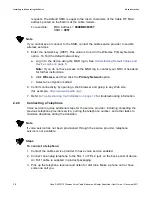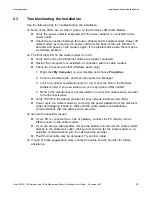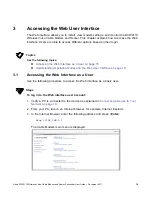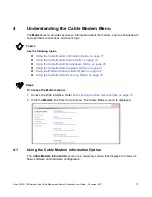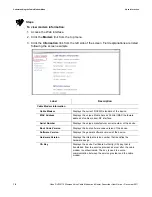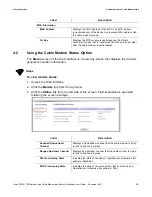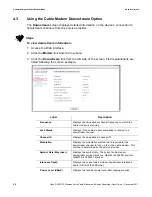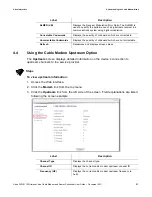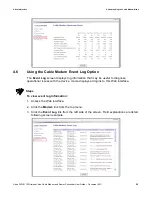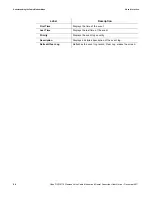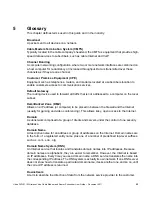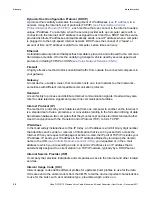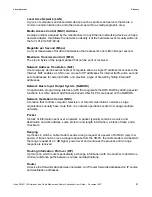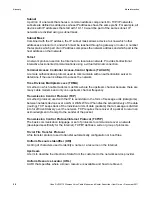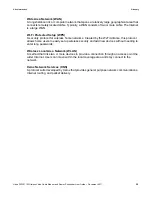
Glossary
Ubee Interactive
26
Ubee DVW2110 Wireless Voice Cable Modem and Router Subscriber User Guide • December 2011
Dynamic Host Configuration Protocol (DHCP)
A protocol that centrally automates the assignment of IP addresses
(see IP Address)
in a
network. Using the Internet’s set of protocols (TCP/IP)
(see Transmission Control
Protocol/Internet Protocol (TCP/IP))
, each machine that can connect to the Internet needs a
unique IP address. For example, when the service provider sets up computer users with a
connection to the Internet, an IP address is assigned to each machine. DHCP lets the service
provider distribute IP addresses and automatically sends a new IP address when a computer
is plugged in to the high-speed Internet network. DHCP uses the concept of a “lease” or
amount of time an IP address is valid for a computer. Lease times can vary.
Ethernet
A standard network protocol that specifies how data is placed on and retrieved from a common
transmission medium. It forms the underlying transport vehicle used by several upper-level
protocols, including TCP/IP and XNS
(see Xerox Network Services (XNS))
.
Firewall
A highly effective method to block unsolicited traffic from outside the connected computers in
your gateway.
Gateway
A local device, usually a router, that connects hosts on a local network to other networks –
sometimes with different incompatible communication protocols.
Headend
A main facility to process and distribute Internet communication signals. Headend may also
refer to cable television signals and power line communication facilities.
Internet Protocol (IP)
The method or protocol by which data is sent from one computer to another on the Internet. It
is a standard set of rules, procedures, or conventions relating to the format and timing of data
transmission between two computers that they must accept and use to understand each other.
Used in conjunction with the Transfer Control Protocol (TCP) to form TCP/IP.
IP Address
In the most widely installed level of the IP today, an IP address is a 32-bit binary digit number
that identifies each sender or receiver of information that is sent in packet form across the
Internet. When you request a Web page or send an e-mail, the IP part of TCP/IP includes your
IP address. IP sends your IP address to the IP address obtained by looking up the domain
name in the URL
(see Uniform Resource Locator (URL))
you requested or in the e-mail
address to which you are sending a note. A dynamic IP address is an IP address that is
automatically assigned to a client station in a TCP/IP network, typically by a DHCP server.
Internet Service Provider (ISP)
A company that provides individuals and companies access to the Internet and other related
services.
Interval Usage Code (IUC)
Interval usage codes define different profiles for upstream burst profiles to use for the data.
IUCs are sent to the cable modem from the CMTS to tell the device important characteristics
to use for the burst, such as modulation type, preamble length, and so on.

